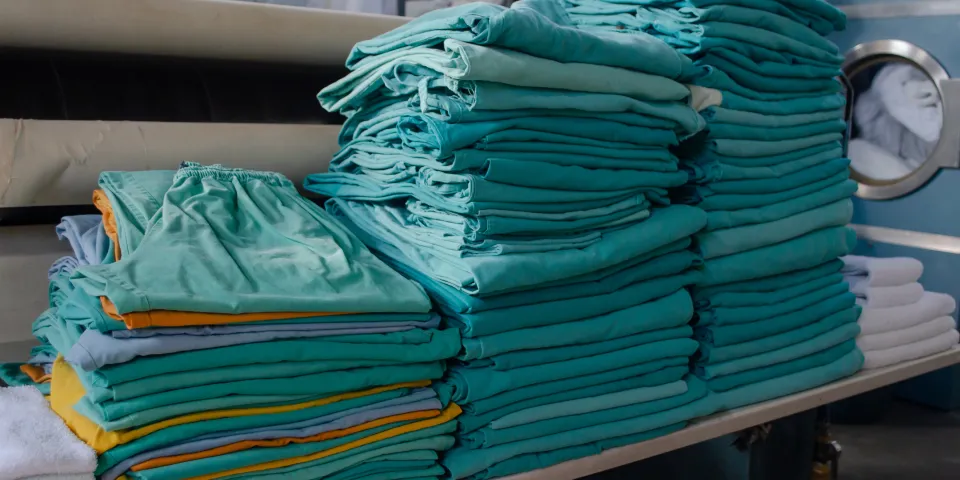Latest 
 Career Development Denise Alexander
Career Development Denise Alexander
Recent Blog Posts


Every October 9, the world celebrates International Scrubs Day. Even if you haven’t visited a doctor’s office in a while, you are undoubtedly familiar with the uniforms worn by healthcare professionals, including doctors, nurses, and other medical personnel.
The term "scrubs" comes from the practice of "scrubbing in." Scrubs are designed to be worn in healthcare settings, where they are subject to strict cleaning protocols to prevent the spread of infectious diseases.
While the uniform has become eponymous to healthcare, the history of scrubs is complex.
In the early days of medical practice, doctors simply wore their regular clothes when attending to patients. This was even the case during surgery. The only slight deviation from a physician’s normal clothing was when a surgeon would sometimes wear an apron to protect their clothing from stains.
Nursing was slightly different. Many of the first nurses throughout the centuries were nuns. Their medical uniforms were their habits, which usually included a robe, a head covering and an apron. Echoes of these first nuns’ “uniforms” were implemented in the clothing that Florence Nightingale recommended for nurses in the mid-1800s. Florence Nightingale introduced the first standardized nursing uniform during the Crimean War. The uniform was a full-length, long-sleeved dress and apron intended to protect nurses from illness.
A shift in medical uniforms began during World War I when doctors were faced with many traumatic injuries on the battlefield. These healthcare facilities realized the necessity for sterile uniforms that could also withstand the wear and tear of demanding medical care.
This was compounded by the Spanish flu pandemic of 1918. The pandemic that killed between 20 and 40 million people inspired doctors to wear masks, but it was more for their personal protection than their patient's protection from infection. However, for the next two decades, they continued to wear regular clothing until the first real medical uniforms were introduced.
In the 1940s awareness of wound infection and the need to have a sanitary operating room prompted the first use of medical scrubs. The first medical scrubs were gowns or drapes that covered the surgeon and medical staff while operating and were originally worn to cover hair for sanitary purposes. To symbolize cleanliness, everyone in the operating room began to dress in white uniforms, creating the iconic image of a nurse or doctor in a white uniform. The crisp white nurse’s cap also became popular in the 1900s.
While the functionality and cleanliness of the scrubs remained consistent throughout the 20th century, there were some changes. White uniforms were slowly phased out once it became clear that they showed blood and other stains very easily. Additionally, the combination of white uniforms, white operating rooms, and bright lights was thought to contribute to eye strain. In the '60s through the '70s, operating room attendants began to wear green scrubs as a less vibrant but still high-contrast solution.
Slowly other colors and patterns were introduced for nurses and other healthcare professionals. By the late 20th century, scrubs became the familiar V-neck shirts and drawstring pants we know today. Their comfort and affordability made them popular in healthcare and beyond. Scrubs became the standard for all types of healthcare professionals because they were easier to sterilize than traditional gowns.
Scrubs Day is meant to show appreciation and recognition for the hardworking medical professionals who wear these heroic uniforms every day. Whether you're lounging at home in a comfortable pair of scrubs to mark the occasion or giving a shoutout to the healthcare community on social media, this day is a simple but meaningful way to honor those who dedicate their lives to helping others.
Think about how you can join in—whether it's by wearing scrubs yourself, sending a thank-you note to a healthcare worker or simply taking a moment to reflect on the vital role these individuals play in our lives. So, when the date comes around again, don't miss the opportunity to celebrate the scrubs-wearing heroes among us!
BLS pay estimates calculate the median annual wage for various occupations. Per the BLS the median wage for an occupation is: "The wage at which half of the workers in the occupation earned more than that amount, and half earned less. Median wage data are from the BLS Occupational Employment and Wage Statistics survey." Bureau of Labor Statistics (BLS), U.S. Department of Labor, Occupational Outlook Handbook 2024. BLS median wage estimates do not represent entry-level wages and/or salaries. Multiple factors, including prior experience, age, geographic market in which you want to work, and degree level and field, will affect career outcomes, including starting salary and earnings as an experienced employee. Herzing neither represents that its graduates will earn the median salaries calculated by BLS for a particular job nor guarantees that graduation from its program will result in a job, promotion, particular wage or salary, or other career growth.
Get the latest news you need to know, from study hacks to interview tips to career advancement. Have it delivered right to your inbox biweekly.